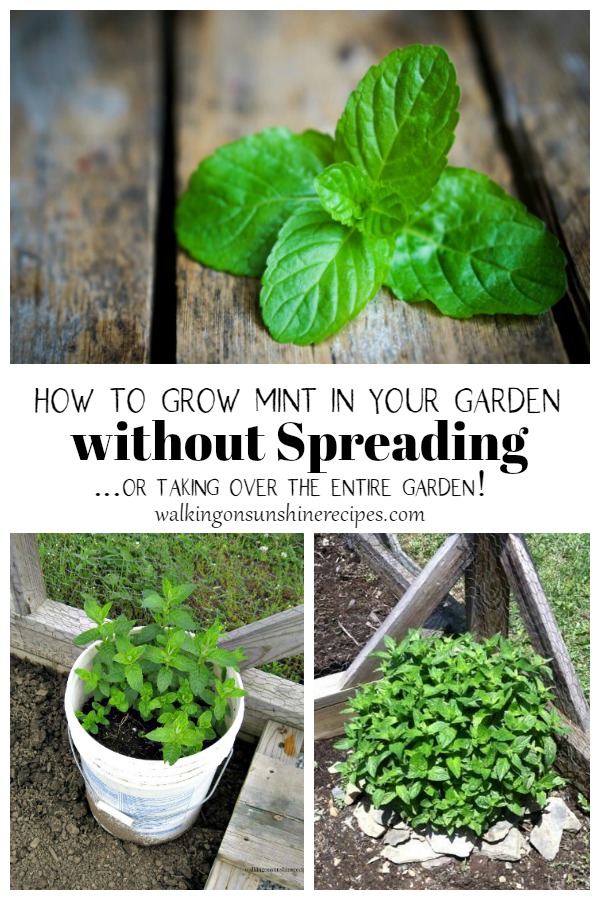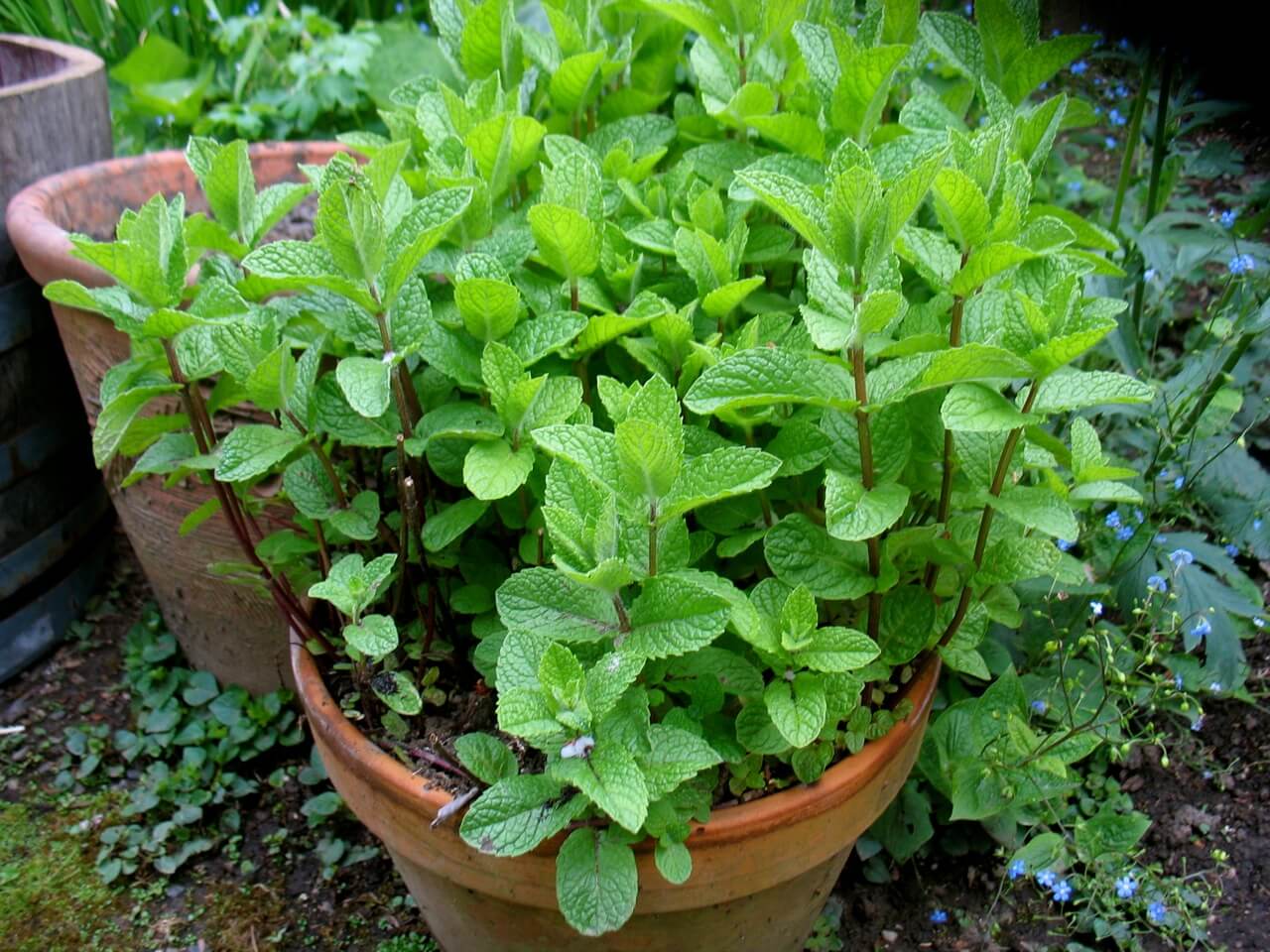How to Grow Mint Without It Taking Over

Mint is a delightful herb that can transform your garden into a fragrant oasis. However, this vigorous plant can quickly become a garden bully if left unchecked. Imagine a charming guest who, if not properly guided, might take over your entire home. That's mint for you. But fear not! With the right strategies, you can enjoy the freshness of mint without it dominating your garden. Let's dive into the world of mint planting, containment, propagation, and maintenance.
Understanding Mint: The Basics
Before we get into the nitty-gritty of growing mint, it's essential to understand its nature. Mint is a perennial herb that thrives in moist, well-drained soil and partial shade. It's known for its rapid growth and invasive tendencies, spreading through runners that can quickly colonize a garden bed. But don't let this deter you. With a bit of planning and care, you can harness mint's vigor without it taking over your garden.
Choosing the Right Location for Mint Planting
Sunlight and Soil
Mint prefers partial shade but can tolerate full sun in cooler climates. It thrives in rich, well-drained soil with a pH between 6.0 and 7.0. Avoid planting mint in areas prone to waterlogging, as this can lead to root rot.
Space Considerations
When deciding where to plant your mint, consider its space requirements. Mint plants can spread up to 2 feet in diameter, so give them ample room to grow. However, if you're short on space, container gardening is an excellent alternative.
Mint Containment: Keeping It Under Control
Physical Barriers
One of the most effective ways to control mint is by using physical barriers. Plant mint in a large pot or a bottomless bucket sunk into the ground. This will contain the roots and prevent the plant from spreading uncontrollably.
Regular Pruning
Regular pruning is crucial for mint maintenance. Pinching back the tips of the stems encourages bushier growth and prevents the plant from becoming leggy. Additionally, removing any runners that escape the designated growing area will help keep mint in check.
Mint Propagation: Growing More from Less
Cuttings
Propagating mint from cuttings is a straightforward process. Simply snip a 3-4 inch stem from a healthy plant, remove the lower leaves, and place it in a glass of water. Within a week or two, you should see roots forming. Once the roots are about an inch long, you can plant the cutting in soil.
Division
Another method of mint propagation is division. In early spring or fall, carefully dig up the plant and divide the root ball into smaller sections. Each section should have a few healthy shoots. Replant these divisions in their new locations, ensuring they have enough space to grow.
Mint Garden Control: Strategies for Success
Companion Planting
Companion planting can help control mint's spread while benefiting other plants. Mint repels pests like ants, rodents, and some insects, making it an excellent companion for vegetables and flowers. However, be cautious when planting mint near other herbs, as it can become invasive.
Mulching
Mulching around your mint plants can help suppress weeds and retain moisture. Organic mulches like straw or wood chips are ideal, as they break down over time, enriching the soil.
Mint Maintenance: Caring for Your Plants
Watering
Mint requires consistent moisture, especially during the growing season. Aim to water your plants deeply once or twice a week, depending on your climate and soil conditions. Ensure the soil is well-drained to prevent waterlogging.
Fertilizing
Mint is a relatively low-maintenance plant when it comes to fertilizing. A balanced, slow-release fertilizer applied in early spring should be sufficient. Avoid over-fertilizing, as this can lead to excessive growth and a decline in flavor.
Pest and Disease Management
Mint is generally resistant to pests and diseases, but it's not immune. Keep an eye out for common issues like powdery mildew, rust, and spider mites. Regularly inspect your plants and treat any problems promptly to prevent them from spreading.

Harvesting and Using Mint
When to Harvest
Mint is best harvested in the morning when the essential oils are most concentrated. You can begin harvesting once the plant has several sets of leaves. Regular harvesting encourages new growth and helps control the plant's size.
How to Use Mint
Fresh mint is a versatile herb that can be used in a variety of dishes and beverages. From refreshing mojitos to flavorful salads, the possibilities are endless. You can also dry mint leaves for later use in teas or seasoning blends.
Conclusion: Embrace the Freshness of Mint
Growing mint without it taking over your garden is a balancing act, but with the right strategies, it's entirely achievable. By understanding mint's nature, choosing the right location, using containment methods, and practicing regular maintenance, you can enjoy the freshness of mint without it dominating your garden. So, why not give it a try? Your taste buds (and your garden) will thank you.
FAQs
1. Can mint grow in full sun?
While mint prefers partial shade, it can tolerate full sun in cooler climates. However, it's essential to ensure the soil remains consistently moist to prevent the plant from drying out.
2. How often should I water my mint plants?
Mint requires consistent moisture, especially during the growing season. Aim to water your plants deeply once or twice a week, depending on your climate and soil conditions.
3. Can I grow mint indoors?
Yes, mint can be grown indoors in a sunny window. Choose a well-draining pot and use a high-quality potting mix. Keep the soil consistently moist and provide plenty of light.
4. How do I propagate mint from cuttings?
To propagate mint from cuttings, snip a 3-4 inch stem from a healthy plant, remove the lower leaves, and place it in a glass of water. Within a week or two, you should see roots forming. Once the roots are about an inch long, you can plant the cutting in soil.
5. What are some common pests and diseases that affect mint?
Mint is generally resistant to pests and diseases, but it can be affected by issues like powdery mildew, rust, and spider mites. Regularly inspect your plants and treat any problems promptly to prevent them from spreading.

0 Response to "How to Grow Mint Without It Taking Over"
Post a Comment